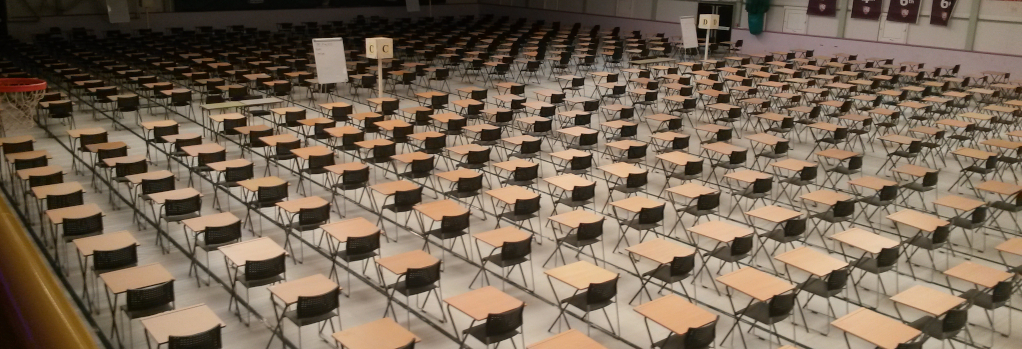Diversifying Assessment

There are a variety of ways in which assessments within and across a programme can be diversified, providing students with the opportunity to develop a range of skills and ensuring a more inclusive learning experience. It is important to ensure that the assessment methods selected are appropriate to the subject matter of a given discipline, aligning with subject-specific learning outcomes and key skills.
- Reports: especially effective when students are required to report on personal experience (e.g. from a lab, practical, workshop, or fieldwork), or on their own unique research (e.g. analysing data from a chosen company/institution, research into legal cases, public documents or news articles about a specific topic); work well in conjunction with blogs, and similar ongoing forms of assessment, to ensure that students stay on track and aren’t tempted to resort to automated tools for report writing.
- Journal articles: while similar to essays in some cases, journal articles as assessments encourage students to perceive their work as something that could hold value in the ‘real world’; this is especially the case where students are writing about the results of their own research, where their work will be published (even if only internally), and/or where they are looking to pursue a career in research.
- Annotated bibliographies: as stand-alone assessments, as formatives leading to summatives, or as part of summative assessments, annotated bibliographies can help students to focus on critical approaches to literature in their discipline before they are tasked with writing a full essay/article/dissertation; they can be another way to ensure that students are keeping on track and producing their own work.
- Blogs and journals: ongoing forms of assessment like blogs can be used in a number of different ways, both to support students in keeping up with their work and in providing you with a sense of how well students are engaging with their learning; blogs can be used for:
- informal learning journals: students reflect on their learning, make connections between ideas and concepts in and outside of the module, and/or consider how they might improve their approach to academic tasks
- tracking progress in a big project or placement: students post regular updates about a long-term individual or group assessment
- assessment snippets: students post drafts of elements of an assessment, keeping them on track, providing them with practice in the assessment format, and allowing them to get informal feedback from the lecturer and/or fellow students
- discipline-specific journal: students learning how to use a new kind of research method record progress in their blog (e.g. mini-ethnographies; details of trying out a new experimental method; reflections on different approaches to a literature review)
- Posters: with or without an accompanying oral presentation, posters can challenge students to present their research in a visually stimulating way that is authentic to academic forms of communication.
- Podcasts: audial assessments give students the opportunity to refine their oral presentation skills while providing the flexibility to use a script, talk around an outline or engage in dialogue with a peer.
- Videos: a highly flexible medium, video can allow students to focus on presentation skills (e.g. screencast with a PowerPoint), make use of on-location filming (e.g. lab, historic site, museum) or create multi-media narratives (e.g. documentaries, animations). Planning, preparation, filming and editing help students to build transferrable skills as well as to think about the assessment topic in new and challenging ways.
Best Practice Tips
- Written assessments, whether essays or otherwise, are often more fruitfully viewed as assessments for and as learning rather than assessments of learning. This means that undertaking an assessment is part of the students’ learning, rather than solely ‘proof’ of what they have already learnt. This is also an important factor in combatting the inappropriate use of generative AI in coursework.
- Make sure that you have worked out how assessment management and submission will work beforehand, and have communicated this with students, e.g.:
- Will students/groups be choosing their own research topics? If so, does this need to be managed in a particular way?
- Will blogs/journals be visible to the whole cohort, or just to the marker? How will you provide formal or informal feedback, and how often? How will you ensure that students do not continue to post/edit after the deadline?
- Will posters be shared in-person or online, as part of an event or as a digital resource?
- If students are encountering a new method of assessment for the first time, they will need plenty of guidance on how to undertake it. This could include:
- exemplars
- detailed explanation of the marking frameworks/rubrics, including what will not be considered in marking
- formative assessment directly relating to the summative
- peer feedback on formatives (and summatives where appropriate)
- There should be consideration for students with learning disabilities or additional needs. Learning should be accessible to all (wherever possible) and the mode of assessment should reflect this. Assessment should evaluate learning outcomes and not, for example, the speed, manual dexterity, vision, hearing, or physical endurance of the learner. Alternative methods to meet the learning outcomes might be necessary for some students, and indeed choice of assessment has been shown to benefit all students (Sambell et al, 2013).
Further Resources and Reading
See Assessment Length Equivalents for recommendations on word count equivalents for other types of assessment.
Browse our Case Studies for more examples of diversity in assessment at Durham.
A marked improvement – Transforming assessment in Higher Education (2012), Advance HE.
Principles of Good Assessment and Feedback (2022), Jisc.
Transforming Assessment in Higher Education (2017), Advance HE.
Jackel, B., Pearce, J. and Radloff, A. (2017) Assessment and feedback in Higher Education, Advance HE.
